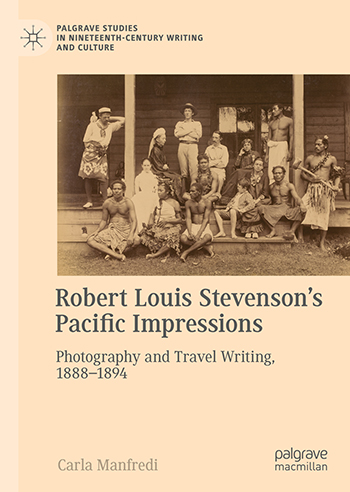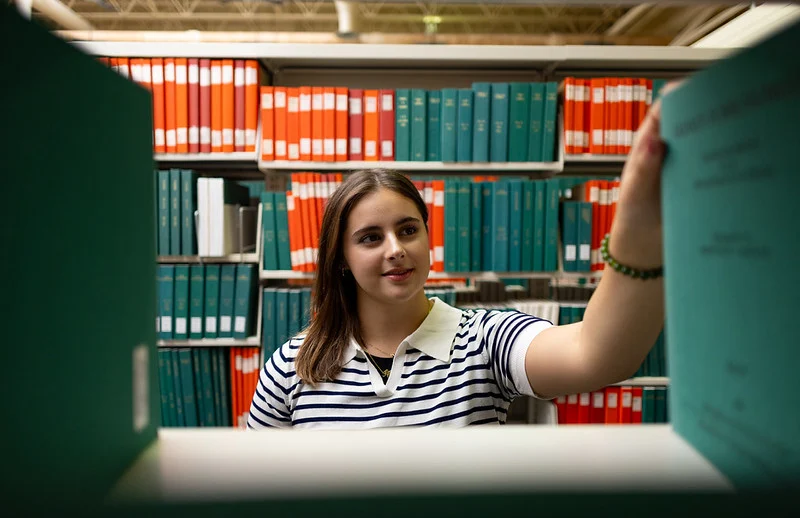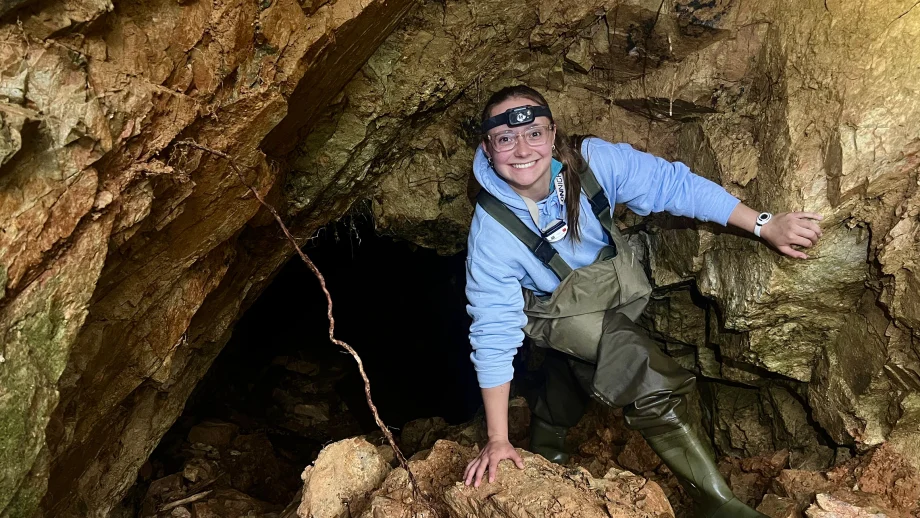
Carla Manfredi’s new book examines RL Stevenson’s life in the Pacific Islands during the 1890s. ©UWinnipeg
Carla Manfredi explores the “Scramble for the Pacific” through the eyes of a famous Scottish writer in her new book, Robert Louis Stevenson’s Pacific Impressions: Travel and Photography, 1888 – 1894 (Palgrave-Macmillan 2018).
An assistant professor in The University of Winnipeg’s Department of English, Manfredi said the book emerged from “my doctoral research, which focused on Stevenson’s travels in the South Pacific and his photography collection.”
In the book, she examines Stevenson’s unique position as witness to the vast political and cultural upheaval in the Pacific Islands during the 1890s, a time when European powers raced to claim Indigenous lands.
During that period, Stevenson depicted cultural hybridization, decline, and Islander resistance to British, French, German, and American imperialism through writing and photography.
“The book is really designed around 34 separate images that are a part of a collection of his photography at the Edinburgh Writers’ Museum,” Manfredi explained. “All of the discussion in the book comes from those particular images. My research was prompted by Stevenson’s fascinating and understudied collection of photographs from Island groups in the Pacific, such as the Marquesas, Hawai‘i, and Samoa. After I selected the images, the hard work was to interpret them as historical and cultural objects that carry meaning and even resonate today.”
Stevenson, whose most famous works include Treasure Island, Kidnapped, and the Strange Case of Dr Jekyll and Mr Hyde, left San Francisco with his family in 1888 and spent the following three years travelling through the entire Pacific region — most notably Polynesia and Micronesia — before settling on the Samoan Island of Upolu.

The cover of Robert Louis Stevenson’s Pacific Impressions: Photography and Travel Writing, 1888-1894.
“They bought an estate, set up a plantation, and Stevenson became heavily involved with local Samoan politics,” Manfredi noted, “which led him to being caught up in the ongoing conflict between the Germans colonizers and various Samoan factions.”
Stevenson lived on the island until he died suddenly in 1894 and was given a traditional Samoan burial. As part of Manfredi’s research and her interest in the historical and contemporary Pacific, she visited his grave and estate on the island of Upolu.
During her eight-year process of researching, writing, and completing this book, Manfredi conducted archival research at several institutions, such as The Writers’ Museum in Edinburgh (Scotland) and the Hawai‘i State Archive. She also held fellowships at the Beinecke Rare Book & Manuscript Library (Yale University) and the Huntington Library (San Marino, California).
The release of this book also comes at an important time, as many of the islands Stevenson visited are confronting the disastrous effects of rising sea levels due to climate change.
If there’s one thing Manfredi hopes the book achieves, it’s to create more interest in an often-overlooked region and an overlooked area of Stevenson’s work.
“The South Pacific takes up almost three quarters of the planet, but it’s often thought of in terms of tiny islands in the middle of nowhere with negligible history and culture,” she said. “Through my book, I hope people will, as Stevenson did, begin to learn about the Pacific islands and their peoples. Pacific Islanders, after all, performed incredible feats of navigation, developed sophisticated cultures, and built complex trading networks long before Europeans arrived.”
While Manfredi observed that Stevenson and his family were colonial settlers themselves, nonetheless she thinks that his writing and photographs provide us a glimpse, however imperfect, into the complexities of some nineteenth-century Pacific Island cultures.
Robert Louis Stevenson’s Pacific Impressions: Travel and Photography, 1888-1894 will soon be available at UWinnipeg’s Library and can be purchased from Palgrave-Macmillan in eBook and hard cover editions.




